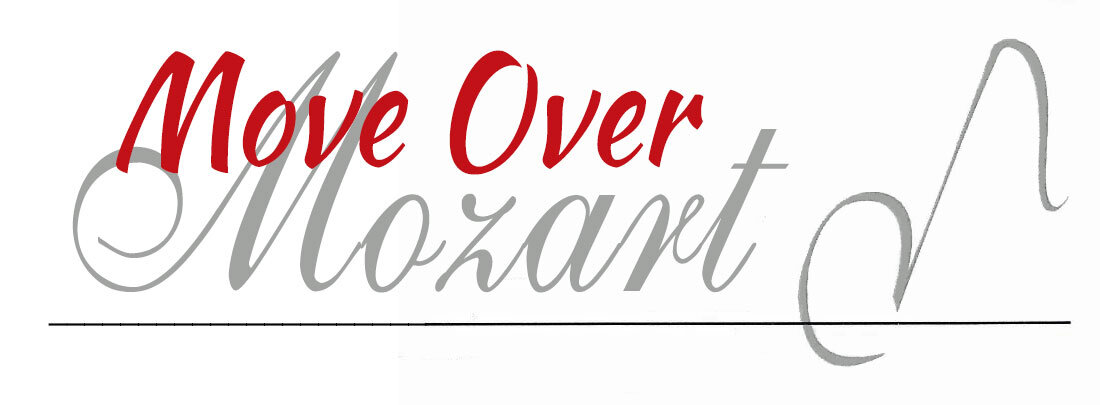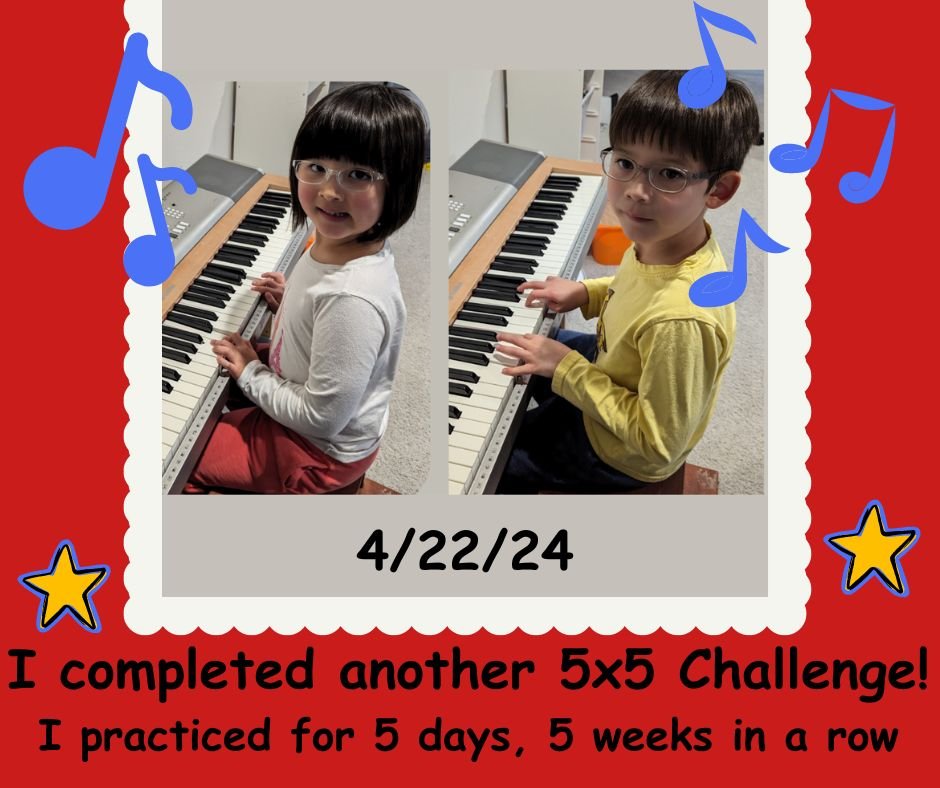The Importance Of Curving Your Fingers When Playing The Piano- Mozart’s Monthly Memo-Volume 41
May 1, 2024
Feature Article - The Importance Of Curving Your Fingers When Playing The Piano
Student Hall of Fame
Practice Tip - Playing with Curly Fingers (video included)
Spring Recital dates
Parents Ask Pam - Do you have a recommendation of which keyboard to purchase for a young child?
Feature Article - The Importance Of Curving Your Fingers When Playing The Piano
By Pamela Cornell, Director
You have probably heard your piano teacher ask you or your child to curve their fingers as they play, but why is this important? Proper finger positioning is not just about aesthetics; it plays a crucial role in producing beautiful music and preventing injury.
Why Curvy Fingers Are Important
Each key on the piano has over 35 moving parts. How you strike the key with strength, momentum and energy changes the quality of the sound. But this takes experience and training. Curving fingers promotes good finger strength and agility, which then develops the muscles and improves dexterity and coordination. With this increased strength and control one can manipulate the sound much easier to play with more precision and expression.
This relaxed and natural hand position also reduces tension and strain. Yes, it is true! Playing with the wrong hand position can actually injure your hand! Also, if your hand is fatigued or in discomfort, you are not going to want to continue playing. By playing with a relaxed hand with curved fingers, one is reducing tension and increasing comfort, in which not only will the pianist sound better, but they will also feel better.
Tips For Getting A Good Hand Position
So how do you develop the habit of playing with curvy fingers? Start with the body posture. When sitting at the piano, your elbows should be above the keys, and your forearms should be parallel to the floor. If a toy car drove from the elbow to the finger knuckles, it should be flat, no valleys to slide down and no hills to climb! Starting with the right body posture will help the hand be relaxed with the fingertips gently striking the keys. Here are some examples teachers have used to accomplish this goal with their students.
Place the student’s palms on their kneecaps, then move their hands to the piano. Their knees are usually the right size for their hands and this cupped position is the position we want on the piano.
Tell them to pretend there is a delicate bubble under their hand while they are playing. They can't let the bubble pop or float away, but gently hold the bubble under their curved fingers.
Do not admire your nail-polish while playing. If you can see the color of your nails while playing the keys, then your fingers are too straight.
Keeping the thumb tip up on its corner brings the rest of the hand into shape.
Tickle the keys with your finger tips. The finger motion for tickling is similar to the shape needed for playing the piano.
Make little igloo shapes with your hand and fingers. Now think about the penguins living in the igloos. We don’t want squished penguins all over the keys!
Every time I see flat fingers I say, "Arrrrr, where is ye pirate spy glass fingers,” and hold a C shape with my fingers up to my eye. The student can then imitate my spy glass fingers on their eye, and then place that shape on the piano.
Use spider fingers. Pretend your hand is a little spider walking along the keys. Your fingers are the legs and they need to be curvy so the spider can walk.
Place a 12-inch pencil in front of the black keys . This makes it almost impossible to use straight fingers while playing on the white keys.
Place a small, animal-shaped, silicone, fidget toy under the students hands telling them that their hands are the kennel for the animals. They can touch the animal but not squash them. Then they play, keeping the animal under their hand.
Turn the hand over and pretend to hold a snowball in your hand or hold a baby bunny - don’t squish him! Or don’t let him out. Now keep that same shape as you turn your hand back over onto the keys.
Thank about holding a tennis ball, apple or orange. That is the curvy finger shape when playing on the piano.
So now you know why it is important to curve your fingers while playing at the piano, and some fun examples to help your child accomplish this goal. What imagery or phrasing have you used to help your little ones to remember to curve their fingers at the piano?
Student Hall Of Fame
Our students are making great progress! These students have accomplished new goals this last month.
Welcome to our new students and welcome back to returning students -Aarik C, Advay A, Arianna K, Arlo T, Aryan P, Ata D, Ayra S, Brian P, Carmela I, Daris C, Darren Z, Derrick Z, Elizabeth B, Emilia L, Emilia C, Emily J, Florence R, Griffin B, Harper J, Harper S, Ileana R, Jadin J, Jaeden Z, James Q, Jane K, Jayden K, Joaquin K, Kaeya C, Kirubel G, Lance C, Leonel A, Luca L, Madeleine S, Magnolia R, Marlo A, Maya B, Michelle H, Naod D, Naomi D, Narin V, Nikan H, Raiden L, Remy B, Riana A, Ruben S, Ruby Z, Ryder W, Saanvi S, Sankalp S, Sasha K, Seamus M, Sophia S, Sresht C, Sylvia H, Teddy H, Wyatt M, XinChao W,
100-Day - Play the piano for 100 days in a row - Jason J, Jordan P, Kevin J, Nathan H, & Samuel S. (*indicates first time meeting this challenge!)
5X5 - play the piano for 5 minutes, 5 days in a week, for 5 weeks in a row - Ally S, Claire F*, Desmond S, Isabella N, Janice L, Jordan P, Logan G, Matias P, Nathan H, Noah P*, Nora P, Samuel S, & Zaara T. ( * indicates first time meeting this challenge!)
50X - Played their new song 50 times in the first week - Emily J, Iris H, & Ryder W.
Listening - Listen to an hour of classical music every week for 4 weeks in a row - Avi N.
Completed their piano lesson book - Una C, Molly M, & Nathan H.
Congratulations for Molly M! She has completed the Crescendo Kids curriculum. She started before the pandemic as a student with Miss Pam at the Mill Creek community center. She continued online with Ms. Sachie and Mr. Kevin. Now she has decided to pursue another instrument. We are so proud to have started her on her musical journey. We wish her our best!
Practice Tip
Let’s stick with the theme of curvy fingers. Here is an example of what playing with curvy fingers should look like.
Upcoming MOM Events
Want to see all upcoming events? Check out our calendar. It includes when the next Crescendo Kids class begins, school closure dates, piano parties, and recital dates.
2024 Spring Recital - May 17, 18, & 19, 2024, Open to all children currently taking piano lessons. There are several time options over these three days. Click the link to see the choices and sign up. https://MoveOverMozart.as.me/2024SpringRecital
FREE Online Piano Party! Students share their own music as well as participate in musical games, creating music and learning some music history. Each party is a little different with new lessons and a special guest instrument. Come, meet our piano teachers, play some music, and have fun! All ages and musical levels are welcome. Parties are available to non-students, former students as well as current students. Click the link to sign up. Piano Party Sign Up
Saturday, June 1, 2024, 11:00 - 11:45, ages 3 - 12 years
Parent Information Meetings - Have questions about our online piano class program? Want a tour of our practicing app? Click the link to schedule your free meeting with Miss Pam. Parent Info Meeting
Crescendo Kids CLASSES -
North Kirkland Community Center - Tuesdays or Thursdays - visit kirklandparks.net
Spring:
Classes are full
Tuesdays, April 16 - June 18
Thursdays, April 18 - June 20
Summer:
Registration is now
Tuesdays, June 25 - August 20
Thursdays, June 27 - August 22 (no class July 4)
Spartan Recreation Center in Shoreline - Mondays - visit shorelinewa.gov/registernow
Spring:
One opening for ages 5 - 6 years old
Mondays, April 8 - June 17 (no class April 22 & May 27)
Summer:
Registration is now
Mondays, June 24 - August 19
30 - Minute Private Online Piano Lessons - Did you know that many of our teachers also teach privately? Now you can continue your child’s musical education, or your own, with Move Over Mozart. Click here for more information. Private Lessons
New Crescendo Kids Online begins May 7. Our piano classes are fun and easy to do! Perfect for beginning students ages 3 1/2 to 12 years old. Students are put into one of 4 classes depending on their age and musical ability.
Crescendo Kids Online Sign Up
Pre-Reading - Ages 3 - 5 years, or students not yet reading,
We use a color-coded method for the students to match their five fingers to five keys on the piano. New songs using only those 5 notes are given each week.
Primary - Ages 5 -7 years or older and brand new to music,
This group is for the very basics of piano playing. Students learn to play simple rhythms, correct hand position, and the names of the white keys on the piano.
Beginning Elementary - Ages 7-12 years or younger and reading notes,
This is for students just starting to read notes on the staff. Students are taught how the staff relates to the piano and how to translate the notes to making music. Also, having the students memorize a few key notes on the staff will help greatly with their ability to read music.
Advanced Elementary - Ages 7 - 12 years with previous piano lessons
This group already reads notes on the staff and can immediately identify many of the notes by name. They will learn more advanced technique and music theory beyond the initial basics of learning to play.
Parents Ask Pam
Have a question for Miss Pam? You can email, text message, or message on Facebook your questions. She will respond immediately to you, and your question might be featured in future newsletters.
Q: Do you have a recommendation of which keyboard to purchase for a young child?
A: Yes! Actually I wrote a whole article about purchasing a keyboard or piano. Here is a link to that article.
https://www.moveovermozart.net/newsletters/purchasing-a-keyboard-or-piano-part-1-of-2
Your Comments And Questions
We want to hear from you! What questions do you have? What do you like best about this memo? How has our online lessons benefitted your child? Please leave your questions and comments below or email Pam directly at misspam@moveovermozart.net



